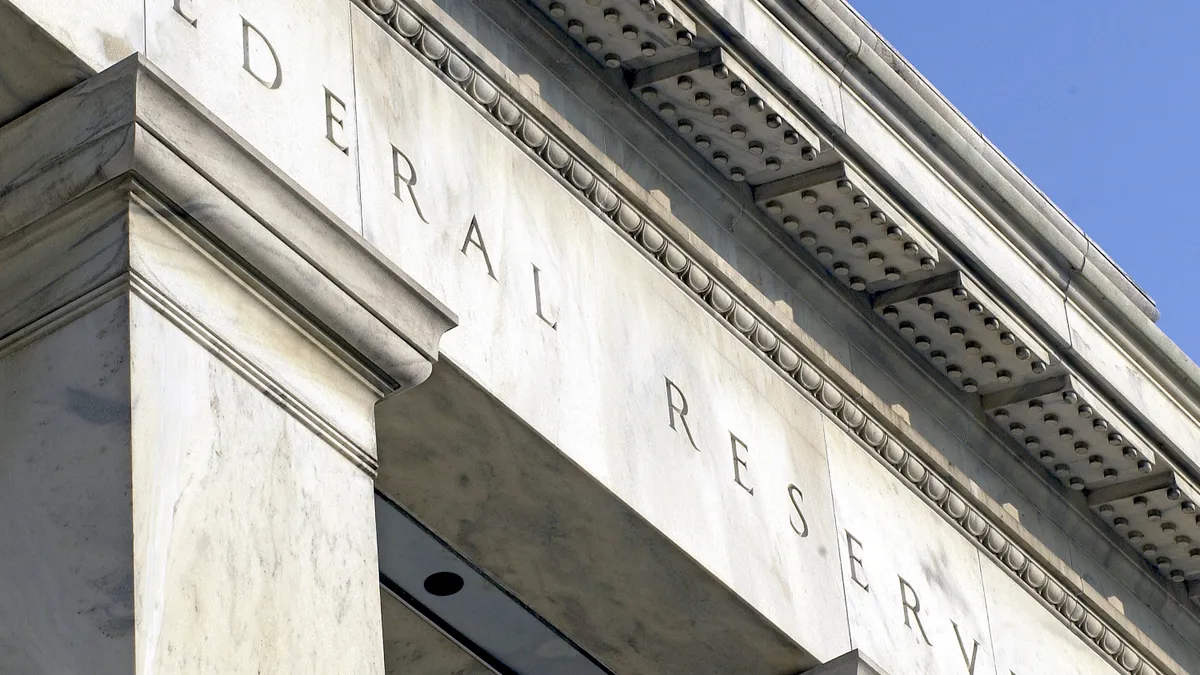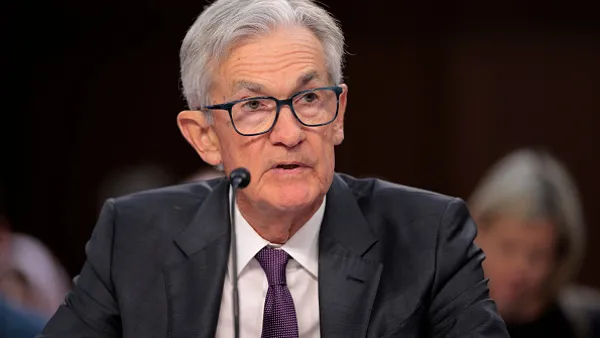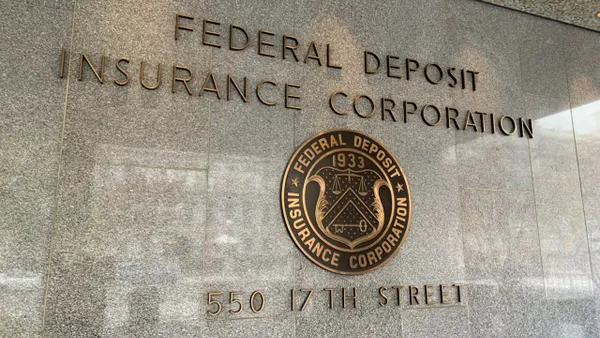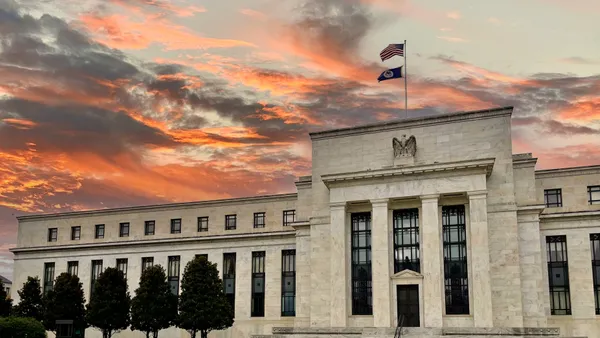Dive Brief:
- Alongside its annual stress test, the Federal Reserve will measure banks' resilience to a V-shaped, U-shaped and W-shaped economic recovery from the coronavirus pandemic, Randal Quarles, the central bank's vice chairman for supervision, said Friday.
- The "sensitivity analysis," the results of which are set to come Thursday, may determine whether the Fed will bar big U.S. banks from paying dividends.
- Quarles's comments came on a day when two Democratic senators wrote the Fed vice chair, along with Federal Deposit Insurance Corp. (FDIC) Chairman Jelena McWilliams and acting Comptroller Brian Brooks, asking the regulators to reverse their May decision to ease the supplementary leverage ratio, which requires banks with more than $250 billion in assets to maintain at least a 3% cushion of high-quality capital.
Dive Insight:
The need for more analysis came as the coronavirus spurred a recession that dwarfed the worst-case scenario imagined in this year's stress test, which was cemented before the pandemic began.
"We simply would not have been doing our jobs if we had just run the test using a scenario framed before the economy began to deteriorate," Quarles said at a virtual event Friday with Women in Housing and Finance. "There's probably never been more uncertainty about the economic outlook."
The sensitivity analysis will adjust the unemployment rate, gross domestic product and Treasury rates based on a V-shaped recovery — when growth falls sharply and then rebounds. The U-shaped scenario shows a recovery "in which only a small share of lost output and employment is regained in 2020." The double-dip W tests "a short-lived recovery followed by a severe drop in activity later this year due to a second wave of containment measures," Quarles said.
The added tests will "inform our overall stance on capital distributions and in ongoing bank supervision," Quarles said. European regulators have urged banks there to suspend dividends this year — a prospect that generated pushback as recently as Monday from the chief of Italy’s largest bank. Former FDIC Chair Sheila Bair has pushed for American banks to do likewise.
Quarles called banks' decision to suspend share buybacks for the second quarter a "prudent step" but argued Friday for a much more granular approach than a blanket ban on dividend payouts. Such a move would ignore an intricate web of calculations developed over decades, he said.
"Do you simply toss out that elaborate framework on the basis of which many market participants have made investment decisions?" Quarles said, according to the Financial Times, adding that more Americans than Europeans rely on dividend income.
Sens. Sherrod Brown, D-OH, and Elizabeth Warren, D-MA, warned the Fed and other regulators against continuing to pay dividends, saying in a letter Friday the practice "does nothing to help bank customers or financial stability."
"There is no justifiable reason to relax a key safety and soundness restraint by arguing that it is necessary for banks to support lending while simultaneously allowing banks to distribute capital to enrich their shareholders," the senators wrote to Quarles and leaders of the FDIC and the Office of the Comptroller of the Currency (OCC).
The Fed had insufficient time to run the sensitivity analysis scenarios using the most recent bank data. So the regulator will use data from the end of 2019 with some elements altered to more closely resemble the economy's current state, Quarles said.
The sensitivity analysis will not be used to determine banks' capital requirements for the year. Instead, banks must comply with a stress capital buffer requirement based on the Fed’s original stress tests. That framework, which was finalized in March, is expected to push capital requirements higher for big banks while some smaller institutions may get a reprieve because they still abide by the Fed’s Comprehensive Capital Analysis and Review.
The central bank will release the results of the sensitivity analysis on an aggregate basis rather than bank by bank. However, the results of the COVID-19 analysis will not be disclosed publicly, American Banker reported.
Banks can make changes to their capital plans after Thursday’s results are released. The Fed will then release the final capital plans before the stress capital buffer requirement kicks in during the fourth quarter.











